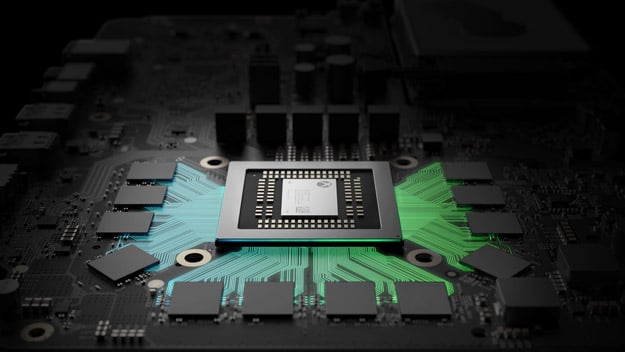Microsoft Xbox Project Scorpio To Support AMD FreeSync 2 Adaptive Refresh Technology

There was once a pretty wide divide between dedicated game consoles and PCs. That is no longer the case. Today's consoles are increasingly PC-like in their makeup. That will be more true than ever when Microsoft starts shipping Project Scorpio, which is essentially an upgraded Xbox One designed for 4K gaming. In addition to faster hardware on the inside, Project Scorpio will support AMD's FreeSync technology (otherwise known as Adaptive Refresh).
The addition of FreeSync support is not something that was divulged during Digital Foundry's recent hardware reveal of Project Scorpio. Instead, much of the focus was on the core hardware, which consists of eight custom AMD x86 CPU cores clocked at 2.3GHz with 4MB of L2 cache, 40 custom AMD Radeon GPU compute units operating at 1,172MHz, and 12GB of GDDR5 memory shuttling data over a 384-bit interface with a maximum memory bandwidth of 326GB/s.

Project Scorpio is a meaty console with the necessary resources to tackle 4K gaming. However, the addition of FreeSync support should not be overlooked. Even better is the fact that Project Scorpio will support both the next generation of FreeSync (FreeSync 2) and HDMI's 2.1 variable refresh rate (VRR) standard.
Adding FreeSync 2 to the mix means Project Scorpio will have improved high dynamic range (HDR) support for superior color reproduction and Low Framerate Compensation. As it stands, PC monitors are the only displays that support VRR currently, so PC users who plug Project Scorpio into their desktop displays will be the first to benefit from these technologies. Same goes for console-only folk who opt to purchase a FreeSync monitor specifically for Project Scorpio.
What this ultimately means for gamers is a smoother gaming experience. Like NVIDIA's G-Sync technology, the open-source FreeSync standard virtually eliminates screen tearing. And since we're talking about FreeSync 2, this will even be true on games running with adaptive v-sync with framerates under 30 frames per second.

